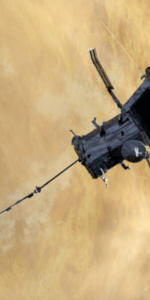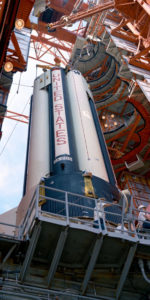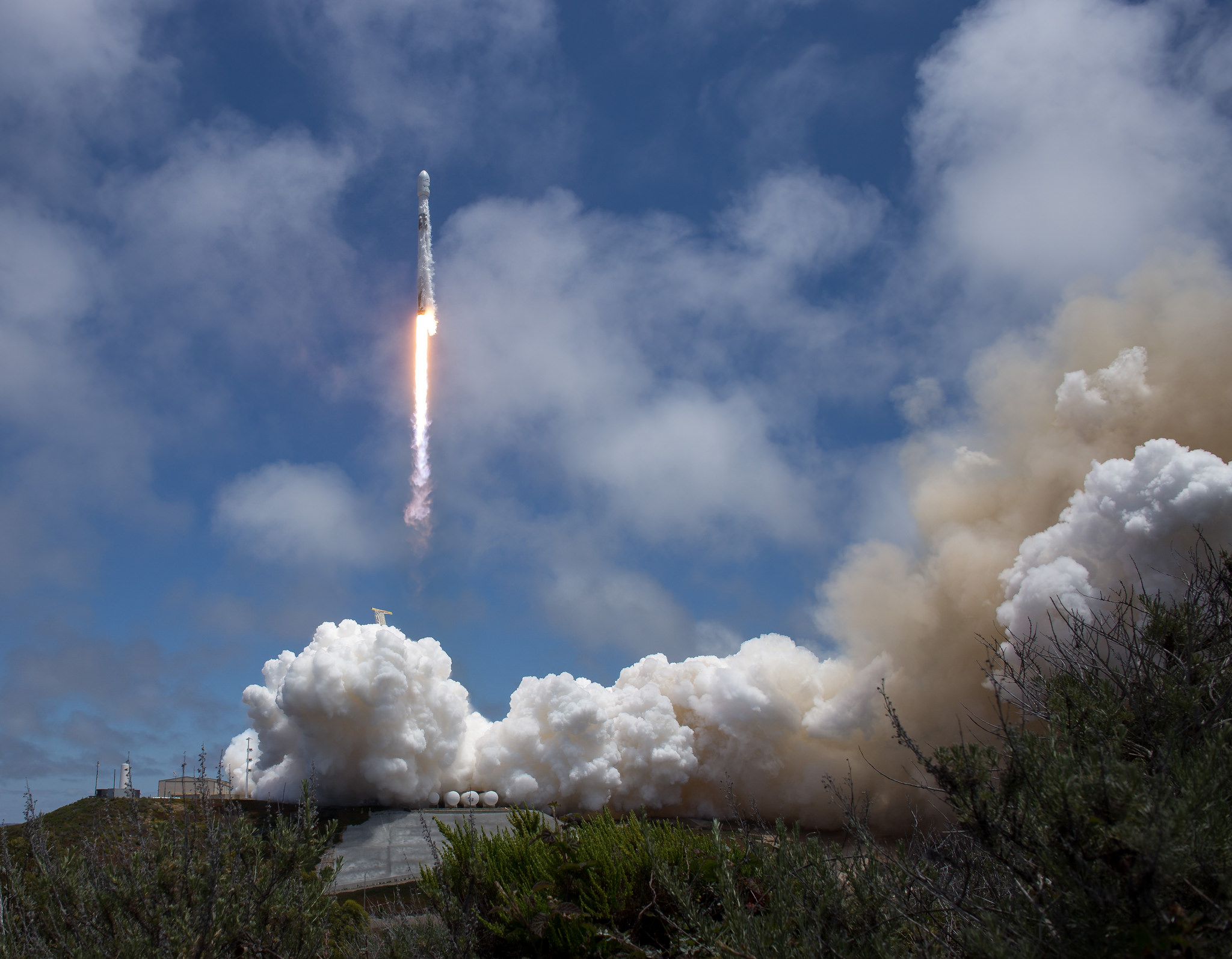
Following a smooth Static Fire Test of its nine Merlin 1D+ first-stage engines on Tuesday, 2 October, SpaceX stands ready to launch—and land—its first Falcon 9 booster on solid ground this weekend, as it undertakes an ambitious mission to deliver Argentina’s SAOCOM-1A radar-imaging satellite into orbit. Liftoff is currently scheduled for 7:21 p.m. PDT (10:21 p.m. EDT) Sunday, 7 October, and will mark the 17th SpaceX launch of 2018, placing the Hawthorne, Calif.-based organization in pole position to eclipse its “personal best” of 18 missions, achieved in 2017. Launch was originally scheduled for Saturday evening, but was postponed 24 hours, to enable SpaceX “to complete pre-flight vehicle checkouts”.
But the real significance of Saturday’s flight will be the first Return to Launch Site (RTLS) on the West Coast. Although “land” landings have become relatively commonplace on the East Coast, with first-stage boosters having alighted at Cape Canaveral Air Force Station, Fla., on no fewer than 11 occasions since December 2015, the resounding sonic boom and blazing fireshow of a rocket returning from the edge of space has not yet been seen at Vandenberg.
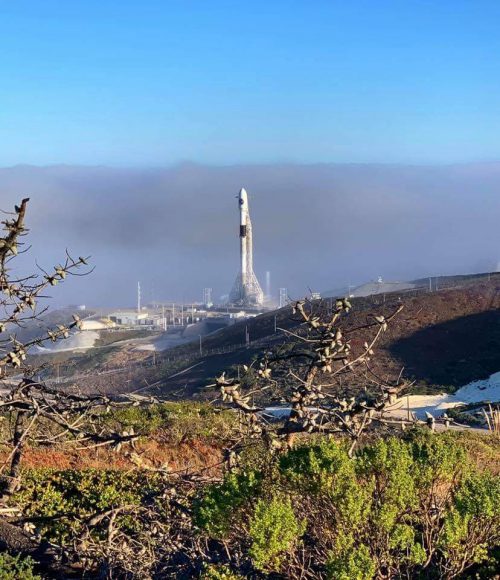
The USAF 30th Space Wing’s Launch Weather Officer is forecasting 7 miles of visibility at launch time, with winds at 12-15 knots and temperatures of 58-63 degrees Fahrenheit. Liftoff scheduled for 7:21pm PDT, not long after sunset, and should put on a spectacular show for Southern California
FOLLOW OUR LAUNCH TRACKER FOR LIVE COVERAGE OF THE LAUNCH AND LANDING!!
This year has been a busy one for SpaceX on the West Coast and Saturday’s mission will mark the fifth SpaceX flight of the year from Space Launch Complex (SLC)-4E, tying with a similar accomplishment in 2017. To date, Spain’s Paz radar-imaging satellite was launched in February, together with three batches of Iridium NEXT satellites in March, May and July, as well as NASA’s Gravity Recovery and Climate Experiment Follow-On (GRACE-FO) twins. That is expected to change next month, when another Upgraded Falcon 9 boosts the final group of ten Iridium NEXT global mobile communications satellites into low-Earth orbit, marking out 2018 for the greatest number of launches ever achieved in a single calendar year from Vandenberg by SpaceX. Saturday’s flight also marks the second re-use of a Block 5 first stage, with this particular booster—designated “B1048”—having previously seen service to deliver the most recent batch of Iridium NEXT birds aloft, last July.
“Local residents may see the first stage of the Falcon 9 returning to Vandenberg Air Force Base, including multiple engine burns associated with the landing,” noted AmericaSpace’s Launch Tracker. “During the landing attempt, residents from Santa Barbara, Ventura and San Luis Obispo counties may hear one or more sonic booms. A sonic boom is the sound associated with the shock waves from an aircraft or vehicle traveling faster than the speed of sound. Sonic booms generate a sound similar to an explosion or a clap of thunder. The sonic boom experienced will depend on weather conditions and other factors.
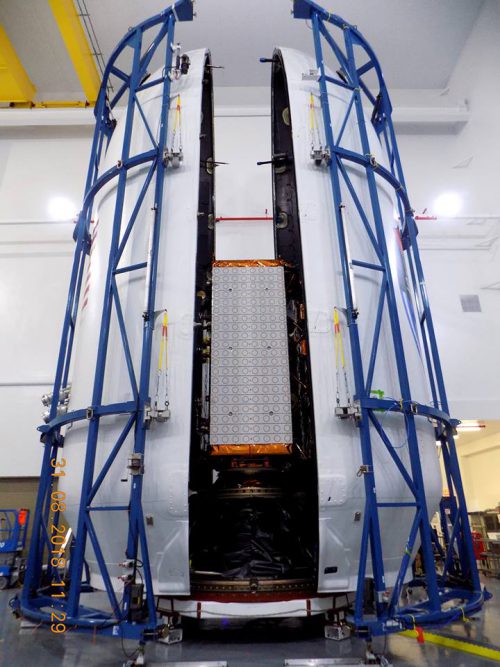
“The public can view this launch from the Hawk’s Nest on Azalea Lane off of Highway 1, just a half mile south of Vandenberg Air Force Base’s main gate,” continued our Tracker. “The Hawk’s Nest gates will open on Saturday at 5:00 p.m. PDT and close at 7:10 p.m. PDT. As a reminder the public is asked not to bring or consume alcohol, smoke, nor have any open fires or barbeques. Weapons are not allowed, additionally, the use of small unmanned aerial systems within five miles of any active runway, such as Vandenberg’s, is prohibited.”
Saturday’s mission will deliver the 3,500-pound (1,600 kg) SAOCOM-1A radar-imaging satellite into a Sun-synchronous orbit, at a mean altitude of 385 miles (620 km). Built by Argentina’s government-owned INVAP aerospace corporation on behalf of the South American nation’s Comisión Nacional de Actividades Espaciales (CoNAE), SAOCOM-1A is the first of two identical spacecraft which will use powerful L-band (1.275 GHz) Synthetic Aperture Radar (SAR) sensors for soil-moisture mapping, terrain modelling and volcanology, as well as developing a better understanding of the characteristics of the low, flatlands of Argentina’s central Pampas region, which supports the cultivation of soybean, wheat, corn and sunflower, as well as sorghum, barley and potatoes. It is also a major cattle-rearing area.
Last month, Reuters noted that the arrival of SAOCOM-1A cannot come too soon for the long-suffering Argentine economy, whose peso has devalued in recent months and the country endured a drought earlier in 2018 which sapped grain exports.
FOLLOW AmericaSpace on Facebook and Twitter!
.




